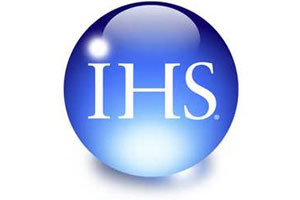Organisations focused on delivering network connectivity services, from big national telcos to small, regional service providers, are under pressure to reduce network downtime. A recent report from IHS Research[1] highlighted that US organisations are losing as much as $100m per year to the problem. It seems to be a similar story in Europe, too, where network outages are estimated to be costing companies an average of €75.5k per year[2].
Meanwhile, business technologies are evolving at a blistering pace, raising the stakes even further. The steady march into the Cloud, together with the rise of enterprise mobility are increasing network traffic and deepening the enterprise’s dependency on the network. Looking not so far ahead, the surge of un-manned connections from machine-to-machine (M2M) initiatives is set to compound matters. Against this backdrop, communication service providers (CSPs) are making it their mission to futureproof their networks so they can maintain network stability, speed and security as their customer’s demands intensify.
Organisations that manage multiple branches across dispersed geographic locations, like hotel chains, petrol stations and retailers, have multifaceted dependencies. Here, network performance outages can halt the business in its tracks, severing the link through which customers engage, card payments are verified and the supply chain is managed.
One such organisation demonstrating ‘best practice’ in network management is Tokheim, a global managed service provider specialising in the retail oil and gas industry, whose purpose-built international network connects 5000 petrol service station customers worldwide. The success of Tokheim’s business rests on the quality of its network.
In 2013, with the future in mind, Tokheim set about evolving its business-critical network to ensure that it could support the fast growing, always-on transaction environment required by its network of branches. To meet performance requirements, Tokheim centralised the application infrastructure management functions needed to monitor the variety of networked point-of-sales (POS) devices deployed on its customers’ forecourts. This upgrade delivers a faster, more reliable payment experience to its customers, supporting its efforts to increase market share. Importantly, the organisation also delivered PCI-DSS compliant POS connectivity for its real-time transaction processing and, to minimise the risk of network down time, integrated a number of backup options, including 3G, together with secure VPN remote access to networked locations worldwide.
By upgrading its legacy VPN configuration to a single, centrally managed platform, the entire Tokheim network can now be provisioned remotely which, through embedded service level indicators, enhances operational efficiency by removing the need for costly on-site assistance.
Recognising the need to get ahead of game with it network configuration, Tokheim has been able to meet today’s needs and also support the introduction of future services which could enhance performance even further, such as LTE backhaul or satellite VPNs.
Only through specialist partnerships, like that which exists between Tokheim and specialist network service enablers, like OneAccess, can this level of flexibility and control be achieved.
[1] http://www.infonetics.com/pr/2014/Cost-Server-Application-Network-Downtime-Survey-Highlights.asp
[2] http://www.computerweekly.com/news/2240239457/Network-downtime-more-costly-than-previously-thought

The author of this blog, Pravin Mirchandani joined OneAccess as chief marketing officer in May 2011. A graduate of both the University of Edinburgh and the London School of Economics, with more than 20 years’ experience in the telecoms industry, Pravin has held key roles in Marketing, Product Development and Sales at major telecom equipment manufacturers and software vendors such as Bay Networks, Nortel, Orchestream and Codima Technologies. Most recently, Pravin was CEO at Syphan Technologies UK, an innovative organisation providing security services to Managed Service Providers (MSPs). Pravin has excellent experience of working in France and is fluent in English, French and German. He lives in France with his wife and child.










